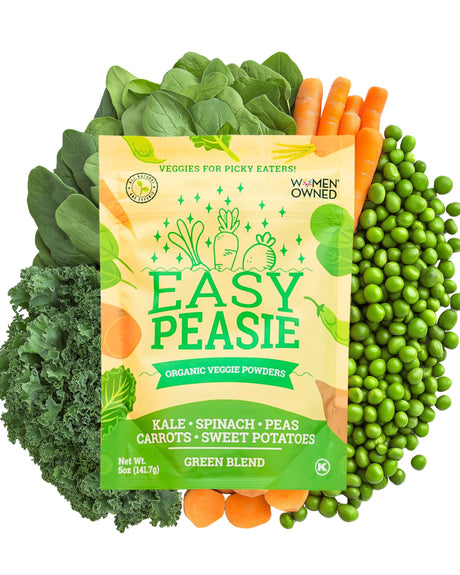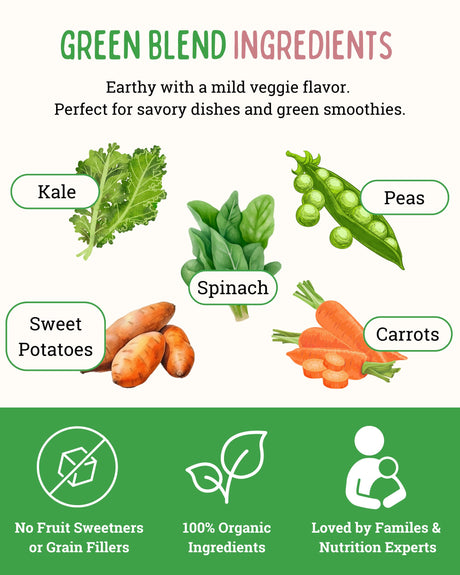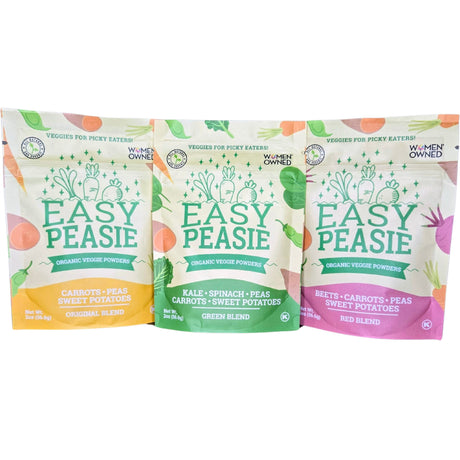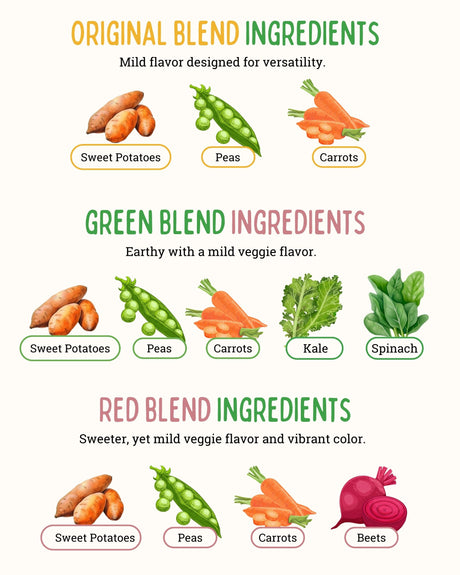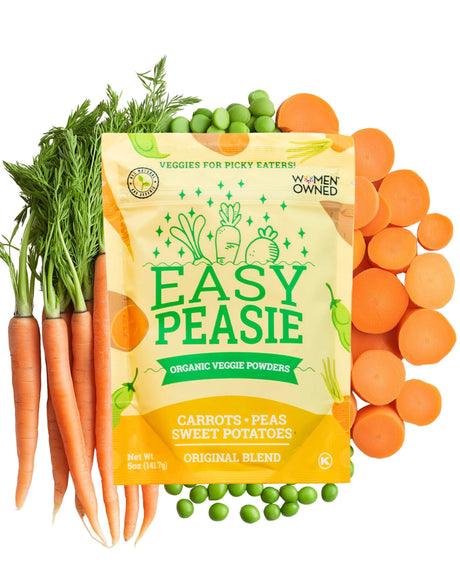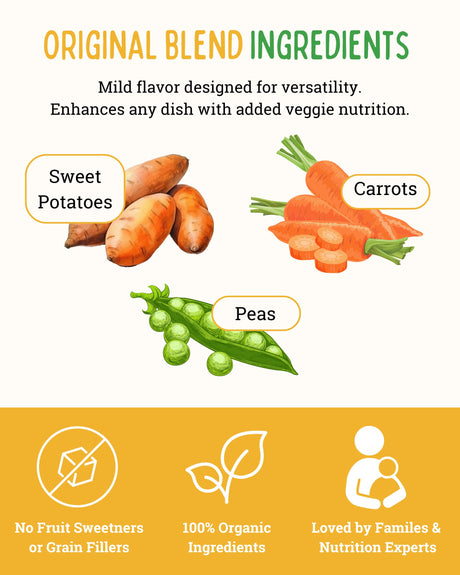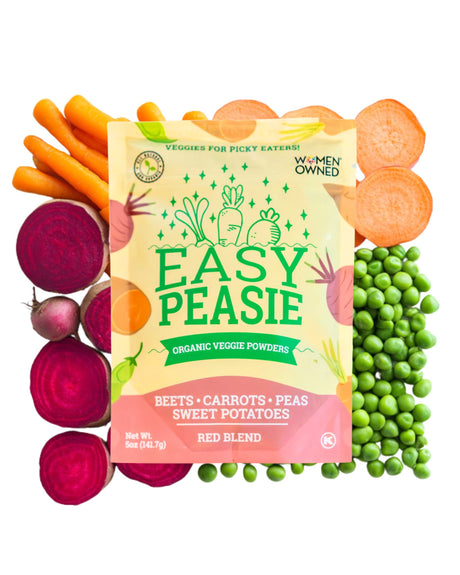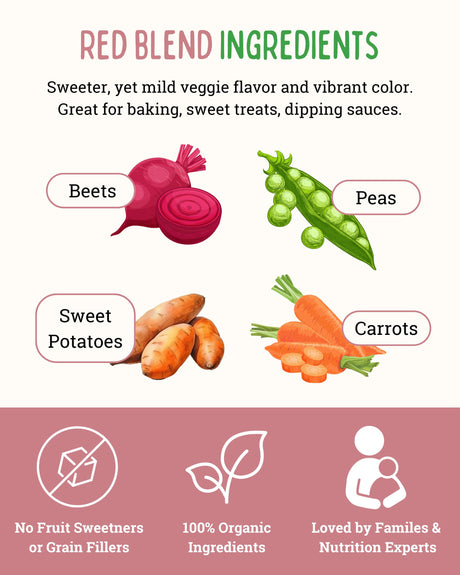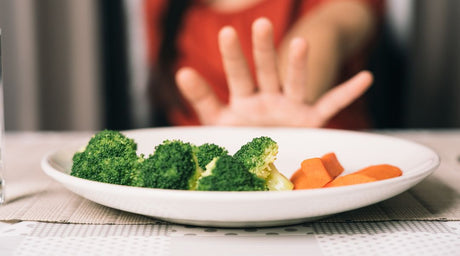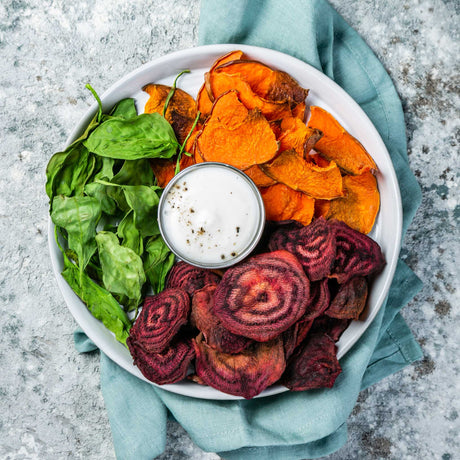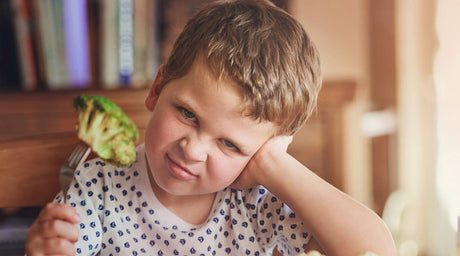The Essential Building Blocks for Kids
Every parent knows that ensuring their child receives all the essential nutrients is paramount for their growth and overall well-being. From the vitamins that bolster their immune system to the minerals that support their burgeoning bones, every nutrient plays a pivotal role. But amidst this vast nutritional landscape, there's one mineral that often doesn't get the spotlight it truly deserves: iron.
Iron: The Unsung Hero of Growth
Iron isn't just another item on the nutritional checklist; it's a cornerstone of healthy development in children. This mighty mineral is responsible for a myriad of functions in the body, from transporting oxygen in the blood to supporting energy production.
As our little ones grow, sprint, learn, and explore, iron is working behind the scenes, fueling their adventures and ensuring they thrive. As we delve deeper into the world of iron, we'll uncover its significance and learn how to ensure our kids are getting the right amount for optimal health.
Understanding Iron: A Deep Dive into a Vital Nutrient

What is Iron and Its Role in the Body?
Iron isn't just a metal; it's an essential nutrient that plays a pivotal role in our overall health. This mighty mineral is a key component of hemoglobin, the protein in our red blood cells responsible for carrying oxygen from the lungs to every part of our body. Think of iron as the fuel our cells need to function optimally.
From supporting brain development in children to aiding muscle metabolism, iron's impact is vast and varied. Without adequate iron, our bodies can't produce enough healthy oxygen-carrying red blood cells, leading to fatigue and a weakened immune system.
Different Forms of Iron: Heme vs. Non-Heme
Diving deeper into the world of iron, it's essential to differentiate between its two primary dietary forms: heme and non-heme. Heme iron, found predominantly in animal products like meat, poultry, and fish, is more readily absorbed by our bodies. It's the type of iron that our system recognizes and utilizes most efficiently.
On the flip side, non-heme iron, sourced from plant-based foods such as spinach, beans, and fortified cereals, is absorbed at a lower rate. However, it's still a valuable source, especially for those following vegetarian or vegan diets. By understanding the distinction between heme and non-heme iron, we can better tailor our diets to meet our individual and family's iron needs.
Signs of Iron Deficiency in Kids: Recognizing the Red Flags
Common Symptoms to Watch Out For
Iron deficiency can sometimes be a silent issue, creeping up without overt signs. However, there are certain symptoms that can serve as indicators. Parents might notice their child appearing more fatigued than usual, lacking the energy for their regular play and activities. Pale skin, especially on the inside of the lower eyelids, can be another telltale sign.
Additionally, kids might exhibit a decreased appetite, frequent infections, or even unusual cravings for non-food items like dirt or ice, a condition known as pica. It's essential to keep an eye out for these symptoms, as early detection can lead to timely intervention and better health outcomes.

The Difference Between Iron Deficiency and Iron-Deficiency Anemia
While the terms might be used interchangeably, there's a distinction between iron deficiency and iron-deficiency anemia. Iron deficiency refers to a decrease in the amount of iron stored in the body, which might not immediately manifest in visible symptoms. It's the preliminary stage where the body's iron reserves start depleting.
On the other hand, iron-deficiency anemia is a more severe condition where the lack of iron affects the production of healthy red blood cells. This can lead to symptoms like rapid heartbeat, shortness of breath, cold hands and feet, and headaches. Understanding this difference is crucial, as it helps in gauging the severity and determining the appropriate course of action.
Recommended Iron Intake for Kids: Ensuring Optimal Growth and Development
Daily Recommended Amounts by Age Group
Iron needs vary as kids grow, and it's essential to ensure they're getting the right amount for their age. For infants aged 7-12 months, about 11 milligrams (mg) of iron daily is recommended. As they transition into toddlerhood, children aged 1-3 years should aim for 7 mg daily. For those in the 4-8 year age bracket, 10 mg per day is the target. As kids approach adolescence, the requirements shift again.
Boys aged 9-13 years need 8 mg daily, while girls of the same age, due to the onset of menstruation, require about 8 mg. It's always a good idea to consult with a pediatrician or nutritionist to ensure your child's specific needs are being met, especially if they have unique dietary or health considerations.
Importance of Regular Check-Ups and Blood Tests
While ensuring a diet rich in iron is crucial, regular medical check-ups play an equally vital role in monitoring a child's iron levels. Routine blood tests can provide a clear picture of their iron status, helping detect any deficiencies early on. These tests are especially important if a child is showing symptoms of iron deficiency or if they have dietary restrictions that might limit their iron intake.
Regular check-ups also offer an opportunity for parents to discuss any concerns with their pediatrician and get guidance on dietary adjustments or supplements if needed. Remember, proactive monitoring and early intervention can make all the difference in ensuring your child's optimal health and development.
Iron-Rich Foods for Kids: Boosting Their Diet with Essential Nutrients
List of Heme and Non-Heme Iron Sources
When we talk about iron-rich foods, it's essential to understand the two primary types of iron: heme and non-heme. Heme iron is found in animal products and is more easily absorbed by our bodies. Some top heme iron sources include lean meats like beef, chicken, and turkey, as well as fish such as salmon and tuna. On the other hand, non-heme iron comes from plant-based sources.
Foods like lentils, beans, tofu, quinoa, and fortified cereals are rich in non-heme iron. Additionally, dark leafy greens like spinach and kale, as well as nuts and seeds, are excellent sources. It's worth noting that while non-heme iron isn't absorbed as efficiently as heme iron, pairing it with vitamin C-rich foods can enhance its absorption.
Tips for Incorporating Iron-Rich Foods into Kids' Diets
Getting kids to eat iron-rich foods can sometimes be a challenge, but with a little creativity, it's entirely doable! Here are some tips to make it easier:
- Make it Fun: Use cookie cutters to shape iron-rich meats or tofu into fun shapes. Kids love anything that looks playful on their plate.
- Blend it In: Smoothies are a fantastic way to incorporate spinach or kale. Combine them with fruits like strawberries or oranges (which are high in vitamin C) to boost iron absorption.
- Snack Time: Offer iron-rich snacks like pumpkin seeds or roasted chickpeas. They're not only nutritious but also delicious and crunchy.
- Mix and Match: Combine both heme and non-heme sources in meals. For instance, a beef and bean chili or a spinach and chicken salad can be both tasty and iron-packed.
- Educate and Involve: Talk to your kids about the importance of iron and involve them in cooking. They're more likely to eat something they helped prepare.
Remember, it's all about balance and variety. Offering a mix of both heme and non-heme iron sources ensures that kids get the most out of their meals, promoting healthy growth and development.
Enhancing Iron Absorption: Maximizing the Benefits
Foods and Nutrients that Enhance Iron Absorption
Iron is a vital nutrient, but did you know that its absorption can be influenced by other foods we consume? One of the most potent enhancers of iron absorption is Vitamin C. This powerful antioxidant can increase the body's ability to absorb non-heme iron, the type found in plant-based foods.
So, how can you pair them effectively? Think of combining beans with bell peppers in a salad or squeezing some lemon juice over your spinach. Fruits like strawberries, oranges, and kiwi are also packed with Vitamin C and make excellent sides for iron-rich meals.
Foods and Factors that Inhibit Iron Absorption
While some foods can boost iron absorption, others might inhibit it. Certain compounds like phytates, found in whole grains and legumes, can bind to iron and reduce its absorption. Similarly, calcium, a nutrient abundant in dairy products, can also hinder iron absorption when consumed in large amounts alongside iron-rich foods.
Another factor to consider is tannins, found in tea and coffee, which can decrease the amount of iron our bodies absorb. It's not about eliminating these foods and beverages but rather being mindful of when and how you consume them. For instance, consider enjoying your morning coffee a bit before or after your iron-rich breakfast, rather than alongside it.
In the journey of ensuring optimal iron intake, it's essential to be aware of these enhancers and inhibitors. By making informed food choices and pairing, you can ensure that your body gets the most out of every iron-rich bite.
Safety Considerations: Ensuring Iron Intake is Both Beneficial and Safe

The Dangers of Iron Overdose
While iron is undeniably essential for our health, especially for growing kids, there's a saying that too much of a good thing can be harmful. This holds true for iron. An overdose can lead to iron toxicity, which can manifest as fatigue, dizziness, nausea, and in severe cases, can damage the liver and other organs.
Children are especially susceptible to the adverse effects of excessive iron. It's crucial to remember that while we aim to ensure adequate iron intake, there's a fine line between just right and too much. Always consult with a healthcare professional before giving any supplements to your child.
Storing Supplements Safely Out of Children's Reach
If you've opted to give your child iron supplements, it's of utmost importance to store them safely. Kids are naturally curious, and those colorful pills can look enticing. Always keep iron supplements, and indeed all medications and vitamins, in a secure location that's out of reach of little hands.
Consider investing in childproof containers or cabinets. It's also a good practice to educate your children about the importance of only consuming foods and medicines given to them by trusted adults. Safety first, always!
Ensuring our kids get the right amount of iron is a balance of providing rich sources, enhancing absorption, and being mindful of safety considerations. With the right knowledge and precautions, you can ensure your child reaps the benefits of iron without the risks.
Prioritizing Iron for Our Kids' Optimal Health

Reiterating the Importance of Iron in a Child's Diet
As we've journeyed through the world of iron and its significance, it's clear that this mineral plays a pivotal role in our children's health. From supporting cognitive development to ensuring robust immune function, iron is a cornerstone nutrient.
But as with all things, balance is key. It's not just about ensuring our kids get iron, but making sure they get the right amount.
Encouraging Parents to Be Proactive
Parents, you have the power to shape your child's nutritional journey. By being informed and proactive, you can ensure that your child gets the benefits of iron-rich foods. Whether it's incorporating more leafy greens into meals, opting for fortified cereals, or simply being more mindful of food pairings to enhance iron absorption, small steps can make a big difference.
A Call to Action: Seek Expert Guidance
While resources like this provide a foundation, every child is unique. It's always a good idea to consult with a pediatrician or nutritionist who can offer personalized advice tailored to your child's needs.
They can provide guidance on appropriate supplementation, dietary changes, and even routine blood tests to monitor iron levels. Let's work together to ensure our kids are not just well-fed, but well-nourished.
In the spirit of health and well-being, I encourage all parents to dive deep into the world of nutrition. Let's prioritize iron and give our kids the best start possible. And as always, I'd love to hear from you. Share your stories, challenges, and successes as we navigate the journey of parenthood together.
Leave your comments below; we love to hear from you! And don't forget to follow EasyPeasie for more veggie info and convo on YouTube, Facebook, and Instagram! ~ThePeas


